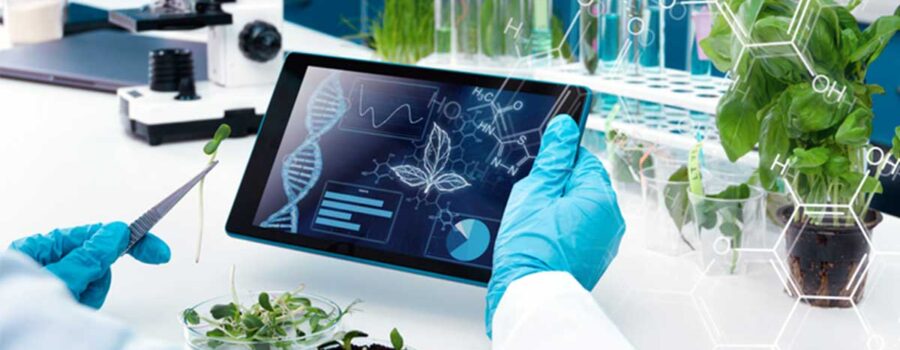Hey there, fellow parents! It’s time for another chat about the food we put on our tables. Today, we’re diving into the world of GMO Versus organic food. That sounds like a mouthful, right? But don’t worry, we’ll make it simple.
Introduction to GMOs
So, let’s start with GMOs, short for Genetically Modified Organisms. These are basically plants or animals that have been changed in a lab to bring out certain traits like resistance to pests or better yield. But the debate about their safety and their effect on our environment is still ongoing.
In response to these concerns, the “Non-GMO” label has popped up. This label is a way to show consumers that a product doesn’t contain any genetically modified ingredients. But here’s where it gets tricky: many people think “Non-GMO” and “Organic” mean the same thing. That’s not the case.
When a product is labeled “Non-GMO”, it’s all about the genes of the plants or animals. It doesn’t take into account other farming practices. For example, non-GMO crops can still be grown with synthetic pesticides, which have been linked to environmental and health concerns. One of these is glyphosate, an ingredient found in many weed killers.
Non-GMO food production can also involve the use of hexane, a chemical used in the extraction of vegetable oils. This stuff is a strong neurotoxin and a major polluter. Non-GMO farming might even use sewage sludge as a fertilizer, which could potentially be harmful.
When it comes to raising livestock, non-GMO doesn’t mean antibiotic-free or growth-promoter-free. These practices have led to concerns like antibiotic-resistant bacteria and questions about the impact on animal welfare.
Understanding the Organic Label
So, what about “Organic”? The organic label is all about how food is produced and farmed. Moreover, this method emphasizes the health of the soil, the welfare of animals, and the sustainability of the environment. In contrast, organic farming unequivocally rejects GMOs, synthetic pesticides, sewage sludge, antibiotics, and growth promoters. As a result, it presents a more comprehensive approach that aims to protect both the environment and consumer health.
So, non-GMO and organic aren’t the same. The non-GMO label reassures you about the genetic makeup of your food, but it doesn’t necessarily mean it’s free from other potential issues. On the other hand, organic guarantees a GMO-free product, while also committing to sustainable and health-conscious farming practices.
This means that we, as parents, need to know what these labels mean when we’re shopping for our families. By understanding the difference between “Non-GMO” and “Organic”, we can make healthier and more environmentally-friendly choices.
Choosing GMO Versus Organic
At the end of the day, the choice between non-GMO and organic depends on what’s most important to you. If your main concern is avoiding genetically modified organisms, you might go for non-GMO products. But if you want to support more sustainable farming practices and avoid a wider range of potentially harmful substances, organic could be the way to go.
But, either way, by choosing non-GMO or organic products, you’re contributing to a movement toward more transparent and conscious food systems. And that’s a good thing.
That said, continuous education remains vital. There’s still a lot of confusion about food labels, which can lead to misinformed decisions. More education is needed – not just for us parents but for our kids too. This can be through school curriculums, community workshops, or even social media.
Food producers and retailers also have a big role to play. They need to be open about their farming and production practices, not just with clear and accurate labeling, but also by helping to educate consumers.
Summary
To sum it up, “Non-GMO” and “Organic” aren’t the same. Additionally, the organic certification offers a broader approach to sustainability and health-conscious farming. Moreover, being aware of this difference can help us make choices that better align with our values and health objectives. Ultimately, that’s food for thought!
Until next time, stay healthy and stay informed!
References:
- “What are genetically modified (GM) organisms and GM foods?”. World Health Organization, www.who.int.
- Aktar, W., Sengupta, D., & Chowdhury, A. (2009). Impact of pesticides use in agriculture: their benefits and hazards. Interdisciplinary toxicology, 2(1), 1-12.
- Benbrook, C. M. (2016). Trends in glyphosate herbicide use in the United States and globally. Environmental Sciences Europe, 28(1), 1-15.
- U.S. Environmental Protection Agency. (2021). Hexane. www.epa.gov.
- Kinney, C. A., Furlong, E. T., Zaugg, S. D., Burkhardt, M. R., Werner, S. L., Cahill, J. D., & Jorgensen, G. R. (2006). Survey of organic wastewater contaminants in biosolids destined for land application. Environmental science & technology, 40(23), 7207-7215.
- Ventola, C. L. (2015). The antibiotic resistance crisis: part 1: causes and threats. Pharmacy and Therapeutics, 40(4), 277.
- Smith, Z. K., & Swinney, D. C. (2021). Ractopamine residues in beef: Considerations for global trade. Journal of Agricultural and Food Chemistry, 69(1), 40-45.
- “Organic 101: What the USDA Organic Label Means”. U.S. Department of Agriculture, www.usda.gov.
- Reganold, J. P., & Wachter, J. M. (2016). Organic agriculture in the twenty-first century. Nature Plants, 2(2), 1-8.








